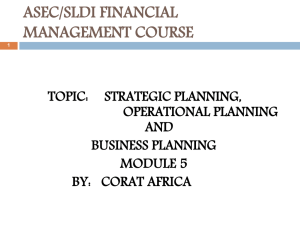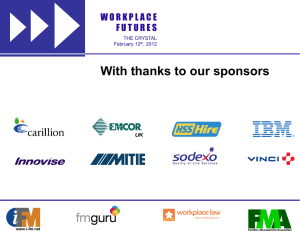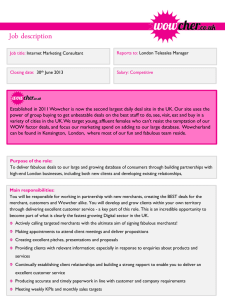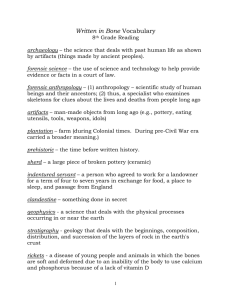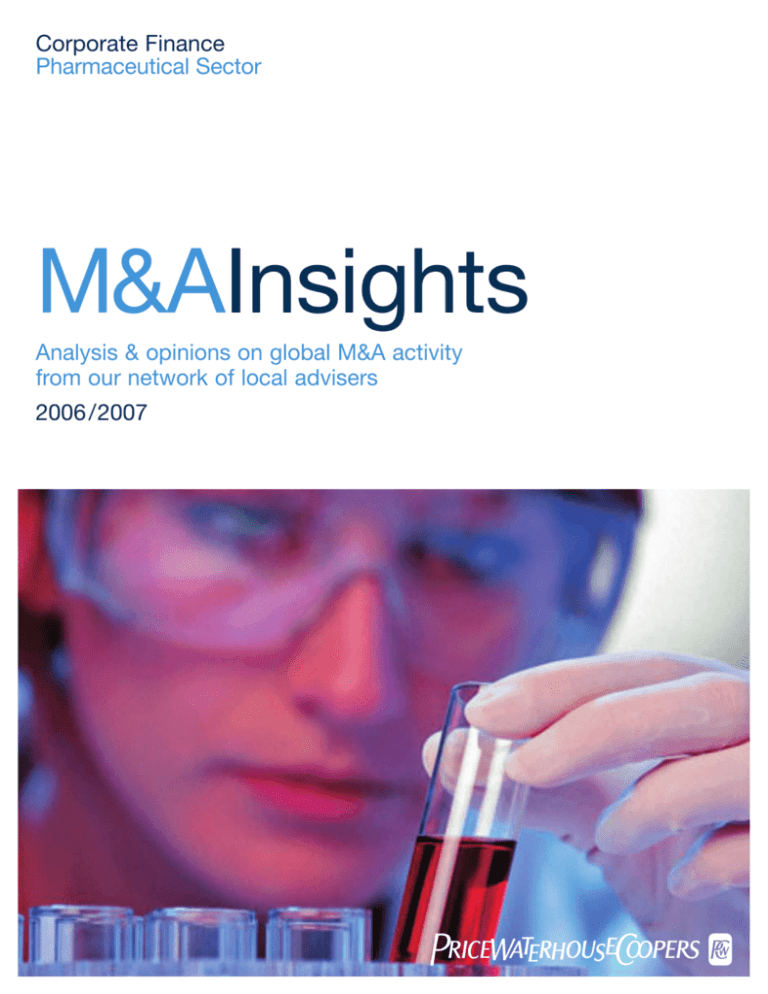
Corporate Finance
Pharmaceutical Sector
M&AInsights
Analysis & opinions on global M&A activity
from our network of local advisers
2006 /2007
pwc
Welcome
Welcome to the latest edition of M&A Insights, a review
of deal activity and key trends within the pharmaceutical
and healthcare sector, by PricewaterhouseCoopers
Corporate Finance.
In addition to coverage of the mainstream pharmaceutical
sector, we also include separate reviews of the medical
devices and biotechnology markets, and fund-raising
for the industry as a whole.
This report highlights some of the deals and developments
that occurred in 2006 and the first half of 2007, another
period of increased M&A activity. Large pharmaceutical
players have been a key driver of M&A in their sustained
effort to strengthen product pipelines. We have also seen
continuing global consolidation in the generics arena.
The biotechnology segment saw major pharmaceutical
players consolidate strategic alliances and joint ventures
as the potential in this sector becomes increasingly
apparent. Private equity claimed a number of sizeable
transactions within the medical devices segment, and
the diagnostics sub-sector was a particular area of focus.
While North America has been the focal point for
corporate activity in previous Insights, Europe was
at the forefront in 2006 in terms of total deal values,
particularly within the pharmaceutical sector.
If you would like to discuss M&A trends or any other
issues facing the pharmaceutical industry, please
do not hesitate to contact me or a member of our
dedicated sector team.
Neal Ransome
European Pharmaceutical Sector Leader
Corporate Finance
PricewaterhouseCoopers LLP
M&A activity proliferates
2006 and the first half
of 2007 saw a significant
increase in M&A activity in
the global pharmaceutical
and healthcare sectors,
continuing the upward trend
exhibited in recent years.
Altogether in 2006 there were 2,111 deals across the pharma/medical devices/healthcare
services sectors with a total deal value in excess of $209bn compared with 2,048 deals
with a total deal value of $152bn in 2005. In addition to this increased aggregate deal value,
34 deals individually worth more than $1bn were recorded in 2006 compared with only
28 in 2005.
There have been 995 deals in the first half of 2007 worth a total of $140bn, suggesting that
2007 is going to be another busy year in M&A for the sector.
2006: Deal Values by Segment
2005: Deal Values by Segment
Services
18%
Services
30%
Pharma
41%
Pharma
54%
Devices
28%
Devices
29%
$209 Billion in Total
$152 Billion in Total
Source: Thomson Financial and other publicly available sources.
Source: Thomson Financial and other publicly available sources.
2006: Deal Volume by Segment
2005: Deal Volume by Segment
Pharma
33%
Pharma
34%
Services
47%
Services
50%
Devices
19%
2,111 Deals in Total
Source: Thomson Financial and other publicly available sources.
Devices
17%
2,048 Deals in Total
Source: Thomson Financial and other publicly available sources.
Page
For more information visit our websites at:
www.pwc.com/pharmainsights or
www.pwc.com/pharma
1
Pharmaceuticals
M&A activity in the
pharmaceutical sector
was worth $113bn
in 2006, a significant
increase on the $61bn
achieved in 2005.
Deal volumes were only slightly up year-on-year with 719 transactions in 2006 compared with
684 in 2005. The surge in deal value was partly caused by three substantial deals, each worth
over $10bn. In total, the top ten deals alone accounted for nearly $80bn in value (compared
with just under $40bn for the top ten deals in 2005) – largely a result of intensifying competition
as pharmaceutical players jostle to boost product pipelines with sizeable acquisitions.
This trend of increasing activity has continued into 2007. In the first half of the year we have
already seen 334 transactions valued at $60bn.
A year of strongly contested deals
The largest deal of 2006
was Bayer’s $22.5bn
acquisition of Schering.
This has brought together Schering’s reputation for innovative research with Bayer’s
development and regulatory capabilities to create Germany’s largest healthcare company.
As a rival bidder to Bayer, and having missed out on Schering, Merck KGaA subsequently
purchased Serono for $13.5bn from its controlling family shareholders, strengthening Merck’s
product pipeline.
Product pipelines a priority
The strengthening
of product pipelines
is a key priority for
large pharmaceutical
companies now facing
patent expiry and
generic competition.
Pfizer decided to sell its consumer healthcare segment in order to focus on acquiring products
and internal R&D in its core pharmaceuticals business. Again, this was a closely contested
deal with Johnson & Johnson acquiring the business in a $16.6bn transaction which saw
Reckitt Benckiser, following its purchase of Boots Healthcare International last year, and
GlaxoSmithKline both reported as competing bidders.
Schwarz Pharma was acquired by the Belgian company UCB, another deal involving the
disposal of a large, predominantly family-owned European business. The combined company
will build on Schwarz Pharma’s strong late-stage pipeline and look to specialise in a number
of high growth therapeutic areas, particularly neurology, oncology and inflammation.
The year also saw Nestlé, widely recognised for its strong food and beverage brands,
strengthen its presence in the nutraceuticals sector as it secured Novartis’ medical nutrition
business for $2.5bn. As a provider of specialised enteral and oral nutrition products it will
be accessing a growing market supported by the demographics of an ageing population.
Page
2
Competition for generics
Within the generics arena,
the purchase of the
Croatian company PLIVA
was the highest profile
transaction in 2006.
This deal involved a three-month bidding war between eventual acquirer Barr Pharmaceuticals
and Actavis. It reflects a strong appetite for consolidation within the generics sector where
economies of scale are key. The acquisition enabled Barr to increase access to the European
markets and in particular Eastern and Central Europe where medicinal drug consumption is
growing rapidly. The combination has created the fourth largest global generic pharmaceutical
company and will allow Barr to gain a footprint in the emerging biosimilar market, building upon
PLIVA’s biologic research programme.
STADA also looked eastwards at higher growth markets and lower cost manufacturing with
its $581m acquisition of Serbian Hemofarm.
Other significant generics deals in this consolidating sector included Hospira’s $2.1bn
acquisition of injectable oncology drugs specialist Mayne Pharma; Watson Pharmaceutical’s
$1.9bn acquisition of Andrx Corp; Dr Reddy’s acquisition of German Betapharm for $571m;
and Mylan Lab’s $736m acquisition of Matrix Labs. This latter deal gave Mylan access to lower
cost API (active pharmaceutical ingredient) manufacturing in India as well as its European sales
and marketing operations.
The generics sector has seen continued activity into 2007, most recently the battle to gain
control of Merck KGaA’s generics unit. Mylan Laboratories beat competition from trade buyers
and private equity houses to acquire the business for $6.7bn. This highly contested deal
has propelled Mylan to number three position in the global generics market behind Teva
and Novartis.
Also in the first half of 2007, Actavis was taken private by Novator, an investment firm founded
by Actavis’ Chairman. At the time analysts commented that this would allow Actavis to bid
more aggressively in M&A transactions having previously missed out on the Pliva and Merck
KGaA transactions.
Page
For more information visit our websites at:
www.pwc.com/pharmainsights or
www.pwc.com/pharma
3
Regional analysis
While deal values in North
America increased by over
25% compared to 2005
levels, it was mid-market
consolidation within the
European market which
really fuelled deal activity
in 2006 and has continued
to be high in 2007.
Four of the five largest deals in 2006 involved pan-European consolidation, with three of the
targets being based in Germany. In addition to the deals already mentioned, the Danish group
Nycomed (private equity backed) was successful in acquiring the German company Altana,
a provider of prescription drugs, for $5.8bn.
The pharmaceutical sector is not as benign a market as it was in previous decades.
Pharmaceutical companies are faced with diminishing pipelines, products coming off-patent,
and increasing pricing pressure from purchasers. Faced with these threats, critical mass
becomes increasingly important if companies are to compete on the global stage. More
recently, this has put European companies in particular, under growing pressure to consolidate.
Number of All Deals by Region
Value of Disclosed Deals by Region: $ Billions
80
2004
2005
60
2006
59
252 238
250
266
278 273
43
40
34
30
27
25
17
16
10 11
11
10
8
2005
200
150
Western
Europe
North
America
Other
Source: Thomson Financial and other publicly available sources.
2006
H1 2007
190
143
140
125
108
100
84
50
21 14 23
8
12 16 17 9
0
2004
223
H1 2007
50
20
300
Number of deals
$ Billions
73
70
0
Western
Europe
Eastern
Europe
North
America
Asia
Pacific
Rest of
World
Source: Thomson Financial and other publicly available sources.
Future Outlook
We have anticipated the
consolidation of the
European mid-market for
a number of years, and
while we have seen some
similar activity in previous
years, 2006 was the first
year in which there was
real momentum behind
this trend.
Page
4
European consolidation is expected to continue into 2008, as will the tendency for larger
pharmaceutical companies to focus increasingly on their core competencies, divesting
divisions such as OTC and animal health.
Another key trend sweeping through the industry is the need to scale down operations
in anticipation of declining sales as a result of products coming off patent.
A more aggressive prediction would be that despite limited evidence to support the theory
that mega-mergers improve R&D productivity, the market will see one mega-merger before
the close of 2008 (the first since 2004) driven by a company unwilling to entertain the prospect
of a declining top line.
Pharmaceuticals Top Ten Deals in 2006
Rank
Value ($m)
Target / Merger Partner
Country
Bidder / Merger Partner
Country
1
22,508
Schering
Germany
Bayer
Germany
2
16,600
Pfizer Consumer Healthcare
US
Johnson & Johnson
US
3
13,473
Serono International
Switzerland
Merck KGaA
Germany
4
5,753
Altana Pharma
Germany
Nycomed
Denmark
5
5,447
Schwarz Pharma
Germany
UCB
Belgium
6
4,146
Kos Pharmaceuticals
US
Abbott Laboratories
US
7
2,628
PLIVA
Croatia
Barr Pharmaceuticals
US
8
2,525
Novartis Medical Nutrition
Switzerland
Nestlé
Switzerland
9
2,491
ICOS
US
Eli Lilly
US
10
2,474
Myogen
US
Gilead Sciences
US
Source: Thomson Financial and other publicly available sources.
Pharmaceuticals Top Five Deals in H1 2007
Rank
Value ($m)
Target / Merger Partner
Country
Bidder / Merger Partner
Country
1
14,555
MedImmune
US
AstraZeneca
UK
2
14,433
Organon Biosciences
Netherlands
Schering-Plough
US
3
6,628
Merck KGaA (Generic Drugs)
Germany
Mylan Laboratories
US
4
4,629
Actavis
Iceland
Novator
Iceland
5
4,335
Mitsubishi Pharma
Japan
Tanabe Seiyaku
Japan
Source: Thomson Financial and other publicly available sources.
Value of Disclosed Deals: $ Billions
Number of All Deals
800
120
$ Billions
Number of deals
17
100
23
80
60
60
40
703
684
719
700
60
73
61
61
20
29
40
2003
2004
60
2001
2002
500
400
334
374
334
300
200
100
11
0
568
600
0
Pfizer / Pharmacia
Sanofi / Aventis
Pfizer / J&J
Other
2005
2006
H1 2007
2001
2002
2003
2004
2005
2006
H1 2007
Schering / Bayer
Source: Thomson Financial and other publicly available sources.
Source: Thomson Financial and other publicly available sources.
Page
For more information visit our websites at:
www.pwc.com/pharmainsights or
www.pwc.com/pharma
5
Biotechnology
The top ten deals in the
biotechnology sector in
2006 had a combined
value of $25bn compared
with $15bn in 2005.
Three biotechnology deals were among the top ten pharma deals in 2006, reflecting the
growing importance of the segment.
The value of the top five deals in the first half of 2007 was $30bn, comfortably exceeding the
value of the top ten deals in the prior year, as a result of the acquisitions of MedImmune and
Organon Biosciences by AstraZeneca and Schering-Plough respectively. These were also the
top two pharma deals coming in at $14.6bn and $14.4bn respectively.
While North American targets comprised the majority of top deals in 2006, it was Switzerland’s
Serono that commanded the number one spot at a value of $13.5bn. The purchase of Serono
saw Merck KGaA strengthen its position in the biotechnology sector with additional capabilities
in developing and manufacturing innovative biologics. The acquisition also served to strengthen
its ethical portfolio particularly in the areas of oncology, autoimmunity and inflammatory and
reproductive health.
Large pharmaceutical players dominate
Following at a distance
were the still sizeable
acquisitions of ICOS by
Eli Lilly and Myogen by
Gilead, standing at just
under $2.5bn each.
Page
6
Myogen will help to expand Gilead’s pulmonary portfolio and follows its purchase of privatelyheld Corus Pharma for $365m. ICOS, acquired by Eli Lilly to increase its market share in the
erectile dysfunction market, was another deal in the trend that is seeing larger pharmaceutical
players acting on the high growth potential in the biotechnology sector. Indeed, five of the top
ten deals fell into this category of big pharma acquiring smaller biotech.
Merck & Co’s acquisition of Sirna Therapeutics gave it access to Sirna’s core technology with
the potential to treat HCV and other retroviral infections including HIV. In a further display of its
appetite for biotech opportunities Merck announced in 2007 the $400m acquisition of biotech
company GlycoFi in a deal that followed on from its partnership agreement.
Consolidation of former alliances
A strategy adopted
by many big pharma
companies in recent years
has been to enter into
alliances with biotech
companies as a means of
assessing their technology
and building a relationship
prior to making an outright
acquisition.
In 2006 several such partnerships were consolidated. Eli Lilly and ICOS had previously been
involved in co-marketing and developing a proprietary treatment, while Genentech’s $922m
acquisition of Tanox involved a drug previously subject to collaborative agreements. Such deals
allow the acquirer to purchase on the basis of proven relationships and to eliminate royalty
payments while accessing full revenue streams.
AstraZeneca was another big pharma involved in cementing a former alliance with the $1bn
purchase of UK-based Cambridge Antibody Technology Group. It secured CAT’s proprietary
antibody engineering platform to enhance its pipeline of biological therapies. The more recent
acquisition by AstraZeneca of MedImmune – at $14.6bn the largest pharmaceutical and biotech
transaction to date in 2007 – has significantly accelerated AstraZeneca’s biologics strategy,
bringing critical mass and, in combination with CAT, creating a fully integrated biologics and
vaccines business.
Growth for niche biotech companies
While large pharma
companies have
been particularly busy,
biotechnology players
have also been active
in the M&A market.
Millipore’s acquisition of Serologicals will unite two high growth companies and allow for
an expanded portfolio with strengths in markets such as drug discovery, antibodies, reagents
and stem cell culture. Global biopharmaceutical player Genzyme won a battle with Millennium
Pharmaceuticals to purchase AnorMED, successfully securing the late stage stem cell
transplantation product Mozobil. Genzyme followed this with the acquisition of Bioenvision
during the first half of 2007, gaining Genzyme exclusive rights to the oncology product
Clofarabine which it had co-developed with Bioenvision.
Amgen has also been acquisitive, expanding its renal care offering with the purchase of Ilypsa,
which develops non-absorbed drugs for renal disorders. This was followed by Amgen’s
acquisition of Alantos Pharmaceuticals which develops drugs for the treatment of diabetes
and inflammatory diseases, helping Amgen to diversify its portfolio beyond its epo franchise.
Page
For more information visit our websites at:
www.pwc.com/pharmainsights or
www.pwc.com/pharma
7
Emphasis on molecular activity
The biotechnology
sector as a whole has
made marked advances
in recent years.
The advent of genetic profiling is allowing for strong growth, and with an inherently complex
manufacturing process there is high demand for new production capacity. One company
seeking to meet the increased demand is Lonza. In 2006 it purchased Cambrex’s biopharma
business for $460m, acquired a production plant from Genentech for $150m and announced
plans to build a second facility in Singapore.
Biotech Top Ten Deals in 2006
Rank
Value ($m)
Target / Merger Partner
Country
Bidder / Merger Partner
Country
1
13,473
Serono International
Switzerland
Merck KGaA
Germany
2
2,491
ICOS
US
Eli Lilly
US
3
2,474
Myogen
US
Gilead Sciences
US
4
1,390
Serologicals
US
Millipore
US
5
1,132
Sirna Therapeutics
US
Merck & Co
US
6
1,035
Cambridge Antibody
Technology Group
UK
AstraZeneca
UK
7
922
Tanox
US
Genentech
US
8
604
AnorMED
Canada
Genzyme
US
9
567
NeuTec Pharma
UK
Novartis Pharma
Switzerland
10
460
Cambrex Corp –
Bioproducts & Biopharma
US
Lonza Group
Switzerland
Source: Thomson Financial and other publicly available sources.
Biotech Top Five Deals in H1 2007
Rank
Value ($m)
Target / Merger Partner
Country
Bidder / Merger Partner
Country
1
14,555
MedImmune
US
AstraZeneca
UK
2
14,433
Organon Biosciences
Netherlands
Schering-Plough
US
3
420
Ilypsa
US
Amgen
US
4
315
Bioenvision
US
Genzyme
US
5
300
Alantos Pharmaceuticals
US
Amgen
US
Source: Thomson Financial and other publicly available sources.
Page
8
Medical Devices
Consolidation in the mid-market
The total deal value
in the medical devices
sector in 2006 was $59bn,
a substantial increase on
the 2005 total of $45bn,
particularly given that
the latter figure included
Boston Scientific’s $25bn
Guidant acquisition.
The growth reflects an increase in both average deal values and the total number of deals.
This stood at 409 in 2006 compared with 356 in 2005.
This trend has continued into 2007, where we have seen 211 deals worth a combined $26bn
in the first half of the year.
The sector cannot lay claim to any blockbuster deals in either 2006 or H1 2007. It has instead
been characterised by consolidation among mid and small-sized companies and product lines.
Private equity at the forefront
Traditionally steering clear
of large pharmaceutical
deals, private equity
houses were once again at
the forefront of the medical
devices segment, claiming
three of the top ten deals
in 2006 and two of the top
five in H1 2007.
The largest deal in 2006 was the $10.8bn Biomet acquisition. The acquiring consortium,
comprising Blackstone, Goldman Sachs, Kohlberg Kravis Roberts and Texas Pacific,
defeated Smith & Nephew in its attempt to acquire its rival and hence strengthen its position
in the reconstructive orthopaedics market. In 2007 Smith & Nephew has partly compensated
for the frustration of failing to acquire Biomet with its $889m acquisition of the Swiss company
Plus Orthopedics.
Phadia, a provider of in-vitro allergy testing systems and autoimmunity testing was acquired
by Cinven in a secondary buyout from PPM Capital, while Gambro, which specialises in renal
products and services, was taken private by EQT/Investor AB for $5.3bn.
In 2007 Molnlycke Health Care was acquired for $3.7bn by a consortium comprised of Investor
AB and Morgan Stanley, and VWR International was acquired by Madison Dearborn Partners
from Clayton, Dubilier & Rice private equity investors for $2.2bn.
Page
For more information visit our websites at:
www.pwc.com/pharmainsights or
www.pwc.com/pharma
9
High demand for diagnostics
The diagnostics subsector, in particular,
has been subject
to increased activity
as new technologies
improve our ability to
detect diseases and
screen for genetic
susceptibilities.
Siemens made two large acquisitions in the fields of immunodiagnostics and molecular
diagnostics. The acquisition of Diagnostic Products for $1.8bn was followed by the
$5.3bn acquisition of Bayer’s Diagnostic division.
We see molecular diagnostics as an area of particular interest with trends mirroring those
seen in biotech following the advent of gene analysis.
The Siemens deals were part of a targeted strategy to create the healthcare industry’s first
integrated diagnostics company by combining the entire imaging diagnostics, laboratory
diagnostics and clinical IT value chain.
One of Siemens’ major competitors, General Electric, appears to be pursuing a similar strategy,
and in 2007 launched an $8bn bid to acquire two units from Abbott Diagnostics. However,
after prolonged negotiations, this deal was called off.
Philips, meanwhile, looked to strengthen its position in diagnostic imaging with the acquisition
of Intermagnetics General, a manufacturer of magnetic components used in magnetic
resonance imaging and patient monitoring devices. The deal strengthens Philips’ position
in the growing MRI market, giving it access to enhanced technologies and allowing it to
further integrate its supply chain.
Diagnostics activity continues in 2007
The largest medical
device deal of H1
2007 was the $5.8bn
acquisition of Cytyc
by Hologic.
Both companies provide medical devices and equipment relating to women’s health and
diagnostics and their combination will create a global leader in this area. Cytyc itself had
made two significant acquisitions in 2007 (Adeza Biomedical and Adiana) prior to being
acquired by Hologic.
Another diagnostics deal announced in 2007 was Inverness Medical Innovations’ acquisition
of Biosite, which had previously been in merger discussions with Beckman Coulter, and
is a leading developer of protein markers.
Vascular activity
Abbott Laboratories’
acquisition of vascular
intervention and
endovascular assets from
Boston Scientific broadens
Abbott’s portfolio to enable
it to cover a complete line
of vascular devices.
Page
10
This transaction arose following anti-trust issues related to Boston Scientific’s acquisition
of Guidant in 2005.
Also in the vascular business, Johnson & Johnson acquired Conor Medsystems for $1.5bn
in a bid to boost its drug-coated stent business. Johnson & Johnson lost out in its bid to
acquire Guidant in 2005 and the Conor acquisition will provide it with next-generation stent
technology to enhance its position in a competitive market.
Medical Devices and Diagnostics Top Ten Deals in 2006
Rank
Value ($m)
Target / Merger Partner
Country
Bidder / Merger Partner
Country
1
10,798
Biomet
US
Investor Group
US
2
10,292
Fisher Scientific International
US
Thermo Electron
US
3
5,327
Gambro
Sweden
Investor AB / EQT
Sweden
4
5,318
Bayer Diagnostics
US
Siemens
Germany
5
4,600
Boston Scientific
(Guidant vascular assets)
US
Abbott Laboratories
US
6
2,191
Sybron Dental Specialties
US
Danaher
US
7
1,767
Diagnostic Products
US
Siemens
US
8
1,649
Phadia
Sweden
Cinven
UK
9
1,459
Conor Medsystems
US
Johnson & Johnson
US
10
1,180
Intermagnetics General
US
Philips
Netherlands
Source: Thomson Financial and other publicly available sources.
Note: Gambro AB is also a healthcare service provider.
Medical Devices and Diagnostics Top Five Deals in H1 2007
Rank
Value ($m)
Target / Merger Partner
Country
Bidder / Merger Partner
Country
1
5,757
Cytyc
US
Hologic
US
2
3,686
Molnlycke Health Care
Sweden
Investor AB / Morgan Stanley
Sweden
3
2,196
VWR International
US
Madison Dearborn Partners
US
4
1,623
Biosite
US
Inverness Medical Innovations
US
5
1,605
VIASYS Healthcare
US
Cardinal Health
US
Source: Thomson Financial and other publicly available sources.
Value of Disclosed Deals: $ Billions
Number of All Deals
450
70
$ Billions
50
Guidant / Boston Scientific
Other
40
25
30
59
20
10
409
25
19
20
20
2004
2005
26
2001
2002
300
311
270
250
301
251
211
200
150
100
50
8
0
356
350
Number of deals
60
400
0
2003
Source: Thomson Financial and other publicly available sources.
2006
H1 2007
2001
2002
2003
2004
2005
2006
H1 2007
Source: Thomson Financial and other publicly available sources.
Page
For more information visit our websites at:
www.pwc.com/pharmainsights or
www.pwc.com/pharma
11
Fund raising
Public markets
2006 saw total IPO
proceeds increase
to $8bn from $6bn in
2005. Although a large
proportion of these
listings were biotech
companies, the number
of IPOs was well down
on 2005, reflecting
a strong M&A market.
Page
12
Brazil, enjoying strong growth forecasts and increasing foreign direct investment, had
three sizeable IPOs. The largest of these was Profarma, a pharmaceutical distributor,
for proceeds of $349m. This was followed by health and dental providers Medial Saúde
and Odontoprev for $340m and $240m respectively.
Our 2004 Insights predicted a possible re-listing for the US-based pharmaceutical
manufacturer Warner Chilcot. It had been quoted in the UK but was then taken private
by a financial consortium led by Bain Capital. Its 2006 US IPO fulfilled this prediction,
raising $1.1bn.
Other significant IPOs in 2006 included Spanish pharmaceutical manufacturer Grifols,
UK care home provider Southern Cross Healthcare, the Chinese device manufacturer
Mindray Medical International, and Russian anti-cancer drug manufacturer Veropharm.
In secondary offerings, Bayer raised $1.5bn, the proceeds being used to help fund its
acquisition of Schering. Similarly, care home services provider Brookdale Senior Living
commanded $874m in an offering that facilitated its $1.2bn acquisition of American
Retirement Corporation.
Private equity
Private equity interest
in healthcare has
continued unabated.
The focus has remained on the medical devices and healthcare services sectors where
revenues are perceived to be more stable, and R&D risk is reduced, rather than in the
pharmaceutical or biotechnology sectors. In total over 850 private equity deals contributed
nearly $13bn in straight equity funding.
Private equity, traditionally benign within the pharmaceuticals sector, provided the funding
for Nycomed’s acquisition of Altana Pharma during 2006.
While we do not expect a sudden surge in such deals, it is likely that private equity will
command an increasing presence in the pharmaceutical sector as the process of developing
and selling medicines responds to increasingly commercial demands. We have seen private
equity, in recent years, engage in transactions of escalating values across all industries and
sectors. On this basis at least one of the 13 companies in the Big Pharma universe appears
to be within reach of private equity – a current possibility that may materialise before the end
of this decade.
Hospitals continued to be a key area of interest. Deals in 2006 included the buyout of
HCA Inc by a consortium led by Bain Capital and KKR, and Apax’s acquisition of European
hospital group Capio. Apax also co-invested with Netcare, the South African hospital provider,
in its $3.9bn acquisition of the UK hospitals group General Healthcare.
The strong fundamentals exhibited in the healthcare sector continue to attract private equity
interest, be it hospitals or care homes, with ageing demographics and increased preventative
care presenting a positive background and fuelling deals on both sides of the Atlantic.
Total Funds Raised
50
$ Billions
40
30
28.8
26.7
27.4
11.8
12.6
36.9
38.1
39.0
12.2
11.4
12.7
17.5
20.3
18.5
7.2
6.4
7.8
2004
2005
2006
6.3
20
10
0
18.6
3.9
2001
Private Equity
10.0
13.3
4.9
1.5
2003
2002
Follow-ons
IPOs
Source: Thomson Financial and other publicly available sources.
Page
For more information visit our websites at:
www.pwc.com/pharmainsights or
www.pwc.com/pharma
13
For further information, except for US residents, please contact:
Europe
United Kingdom
Neal Ransome
+44 207 213 1015
neal.ransome@uk.pwc.com
Denmark
Michael Eriksen
+45 39 453945
michael.eriksen@dk.pwc.com
France
Noël Albertus
+33 1 56 57 85 07
noel.albertus@fr.pwc.com
Germany
Werner Suhl
+49 69 9585 5650
werner.suhl@de.pwc.com
Ireland
Aidan Walsh
+353 (1) 678 9999
adian.walsh@ie.pwc.com
Italy
Marco Tanzi Marlotti
+39 02 80 646 330
marco.tanzi.marlotte@it.pwc.com
Netherlands
Andries Mak van Waay
+31 20 568 6509
andries.mak.van.waay@nl.pwc.com
Spain
Julian Brown
+34 91 56 84 723
julian.brown@es.pwc.com
Switzerland
Philipp Hofstetter
+41 1 630 1506
philipp.hofstetter@ch.pwc.com
Australia
Tom Fenton
+61 28 266 2752
tom.fenton@au.pwc.com
India
Timmy Kandhari
+91 22 6669 1580
timmy.s.kandhari@in.pwc.com
Japan
Minoru Kikuoka
+81 3 3503 3405
minoru.kikuoka@jp.pwc.com
Singapore
Benjamin Kan
+65 6236 3998
benjamin.kan@sg.pwc.com
Simon Venables
+27 11 797 5660
simon.venables@za.pwc.com
Asia Pacific
Africa
South Africa
For US residents requiring information on corporate finance related services, please contact our registered NASD Broker
Dealer within the US, PricewaterhouseCoopers Corporate Advisory and Restructuring LLC:
United States
Rakesh Kotecha
+1 312 298 2895
rakesh.r.kotecha@us.pwc.com
Americas (for non-corporate finance related services):
United States
Gregory McGahan
+1 646 4712645
gregory.mcgahan@us.pwc.com
For more information visit our either of our websites at:
www.pwc.com/pharmainsights
or
www.pwc.com/pharma
This publication includes information obtained or derived from a variety of publicly available sources. PricewaterhouseCoopers has not sought to establish the reliability of these sources or verified such information.
PricewaterhouseCoopers does not give any representation or warranty of any kind (whether express or implied) as to the accuracy or completeness of this publication. The publication is for general guidance only and does not
constitute investment or any other advice. Accordingly, it is not intended to form the basis of any investment decisions and does not absolve any third party from conducting its own due diligence in order to verify its contents.
Before making any decision or taking any action, you should consult a professional advisor.
PricewaterhouseCoopers accepts no duty of care to any person for the preparation of this publication, nor will recipients of the publication be treated as clients of PricewaterhouseCoopers by virtue of their receiving the
publication. Accordingly, regardless of the form of action, whether in contract, tort or otherwise, and to the extent permitted by applicable law, PricewaterhouseCoopers accepts no liability of any kind and disclaims all
responsibility for the consequences of any person acting or refraining to act in reliance on this publication for any decisions made or not made which are based upon the publication.
PricewaterhouseCoopers (www.pwc.com) provides industry-focused assurance, tax and advisory services for public and private clients. More than 140,000 people in 149 countries connect their thinking, experience and solutions
to build public trust and enhance value for clients and their stakeholders.
Important notice for US residents: In the US, corporate finance services are provided by PricewaterhouseCoopers Corporate Advisory & Restructuring LLC. PricewaterhouseCoopers Corporate Advisory & Restructuring LLC
is owned by PricewaterhouseCoopers LLP, a member firm of the PricewaterhouseCoopers Network, and is a member of the FINRA and SIPC. PricewaterhouseCoopers Corporate Advisory & Restructuring LLC is not
engaged in the practice of public accountancy.
PricewaterhouseCoopers may from time to time send you information about its products and services, events and newsletters that may be of interest to you. If you do not wish to receive this, please contact Laura Cappi
at laura.cappi@uk.pwc.com
© 2007 PricewaterhouseCoopers. All rights reserved. “PricewaterhouseCoopers” refers to the network of member firms of PricewaterhouseCoopers International Limited, each of which is a separate and independent legal entity.



